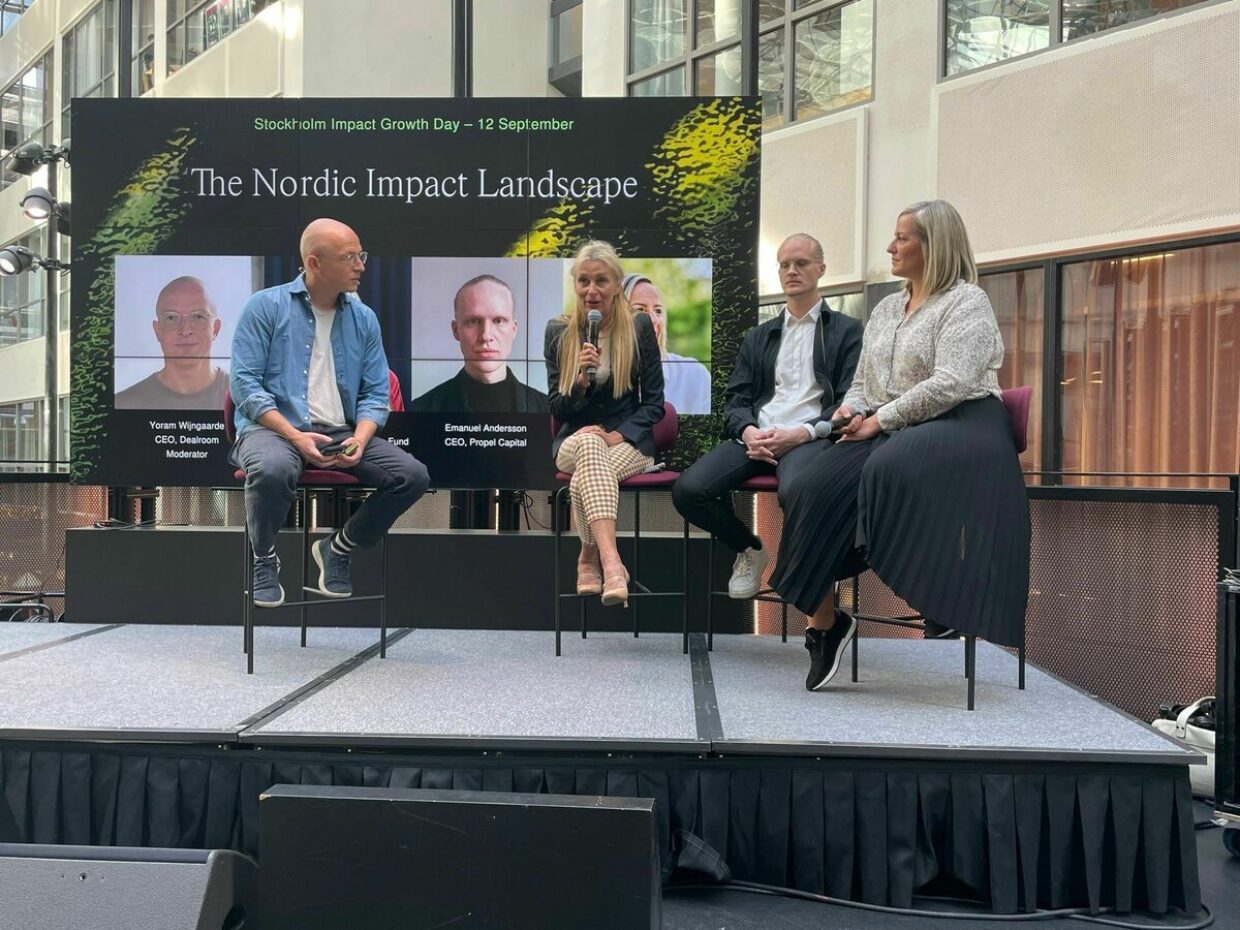The State of the Nordic Impact Venture Scene

Dealroom, a global provider of data and intelligence on startups and tech ecosystems published its latest insight report The State of Nordic Impact Startups 2022 at Stockholm Impact Week last week. I had the pleasure of being on a panel led by Dealroom CEO Yoram Wijngaarde where we discussed the highlights in the report together with co-panelists Emanuel Andersson from Propel Capital and Pia Erkinheimo from the Finnish Climate Fund.
Here are some of my key takeaways from the report and discussions.
1. The Nordics are the impact ecosystem
Impact is definitely catching on, and the Nordics are taking the lead. According to the Dealroom report, the Nordics are the impact ecosystem, with impact startups receiving 26% of all VC funding in the Nordics, as compared to 18% in Europe, and 4% in the US. Among the Nordic countries, Sweden and Norway are the most impact-focused, with impact venture investments hitting almost a third.
Impact venture investments have also soared over the past 5 years in the Nordics, and see an all-time-high volume in investments. Investments skyrocketed from USD 72M in 2010 to USD 5,5B in 2021. Although last year’s all-time high was fueled by Northvolt's USD 2,8B funding round, 2022 is on track to beat the record, with USD 3B worth of impact venture investments so far this year.
2. Impact is a growth driver - but there is a large funding gap in Nordic impact venture
Impact is without doubt becoming a growth driver. The report shows that the valuation of Nordic impact startups has quadrupled since 2020, reaching a total value of USD 78B already for the first half of 2021. The number of unicorns and future potential unicorns has also taken off in the last five years, and Norway, Denmark and Sweden are currently in the top 10 fastest growing startup ecosystems in the world. Combined, the record valuation and growth in unicorns have boosted exit activity and provided attractive returns for investors in the Nordic impact space.
Despite the record growth, there is still a large funding gap in Nordic impact venture. The seed communities in all countries are thriving; the same goes for large-scale VCs and PE/buyout players. However, capital is still very scarce from late seed to Series A/early growth, where there are still very few players.
Despite a significantly better survival rate for Nordic impact startups compared to European peers (25% vs. 9% at 18 months, 33% vs. 18% at 30 months), the access to funding is disproportionally low. The total funding gap is estimated at USD 4B for Nordic impact venture. One of the effects of the funding gap is that an increasing number of international investors are turning to the Nordics for opportunities in impact venture.
3. The Nordics are setting a new standard for impact.
During the panel we agreed that there is a lack of a common understanding of "what constitutes an impact investment". As the impact space grows, so does the need for clarity and transparency about what impact actually is. At Norselab, we believe in product-driven impact. We’re convinced that impact investors should focus on the company’s revenue-generating products or services. In such companies, every new customer or user of a product or service counts. Impact grows at the rate of a company’s commercial success.
Yoram Wijngaarde proposed a litmus test for understanding impact investments: “If you remove the impact, you also remove the business”. The bottom line is that impact should be generated in the same way that the company makes money.
However, there is also great confusion around the term impact itself. Too many confuse it with ESG, or sustainable investing. During the panel, the UN’s Sustainable Development Goals (SDGs) were highlighted as the go-to framework for understanding which positive impacts are needed to create a sustainable future. I also highlighted the need to move away from a tunnel vision on single issues within sustainability and to adopt a multi-lens approach. It is also crucial to consider the potential negative impacts alongside the positive ones. Only then can we get a picture of a company’s impact and have integrity on impact.
As capital is increasingly pulling in the direction of impact and the ecosystem expands, we have a big responsibility as a region to ensure the integrity of impact investing.
4. Deep tech companies at the intersection of industry and impact are a hit
The Dealroom report also highlighted that deep-tech companies at the intersection of industries and impact are outperforming non-deep tech. The sentiment in the panel was also that industrial deep tech impact companies offer some of the most exciting opportunities. “The green shift is not happening in the metaverse” stated Pia Erkinheimo. My co-panelists and I were all highlighting that some of our most resource-intensive industries need urgent fixing if we are to achieve a livable future.
The report shows that "Energy & Utilities" and "Transport & Mobility" are the two largest growth clusters in the Nordic region. This is understandable given the history of these industries in the Nordics and the influence of strong macro trends.
The Nordics are extremely well positioned to drive large-scale positive impact in global, resource-intensive industries. Not only do we have a substantial industry heritage, but we have built up a top-notch talent and competence pool that will help us build the companies that will transform global industries.

These were the most important takeaways from The State of Nordic Impact Startups 2022. I truly believe that there is a massive opportunity in front of us that we must seize with both hands in order to maintain our leadership in the impact space. This opportunity comes with some responsibilities. We must do right by our future and ensure that impact investors focus on businesses that create a meaningful future for all. If you want to learn more about Norselab’s approach to impact, go check out our Meaningfulness Report.


